For a proper intro to the event, please check out: GAMERZ Part 1. Playing is a serious business.
Second and last chapter of my report from the GAMERZ festival, one of the very few French festivals that doesn’t play it safe nor stiff with a programme that endorses the unexpected, a laid-back atmosphere, a few famous names but also an impressive line-up of fresh talents. Plus, it’s in Aix-en-Provence so as the French say “y’a pas photo!” (which means something like ‘it’s a no-brainer.’)
The first part of my report from the festival covered the artworks dealing directly with gaming. From the games inspired by Stanley Kubrick to the installation that virtually kills you as soon as you enter the (physical) exhibition space.
This second part of my notes cover the works that remain playful and ingenious but that experiment with the interfaces, languages, tensions and dynamics of technologies:
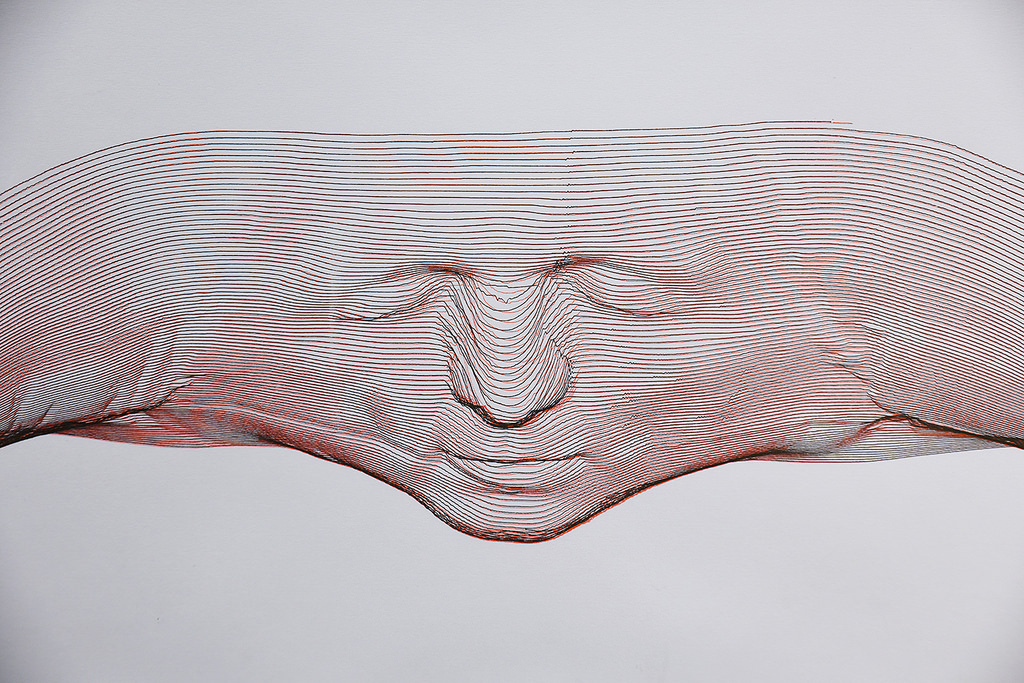
Balint Bolygo, Trace II, 2012. Photo by Luce Moreau for GAMERZ
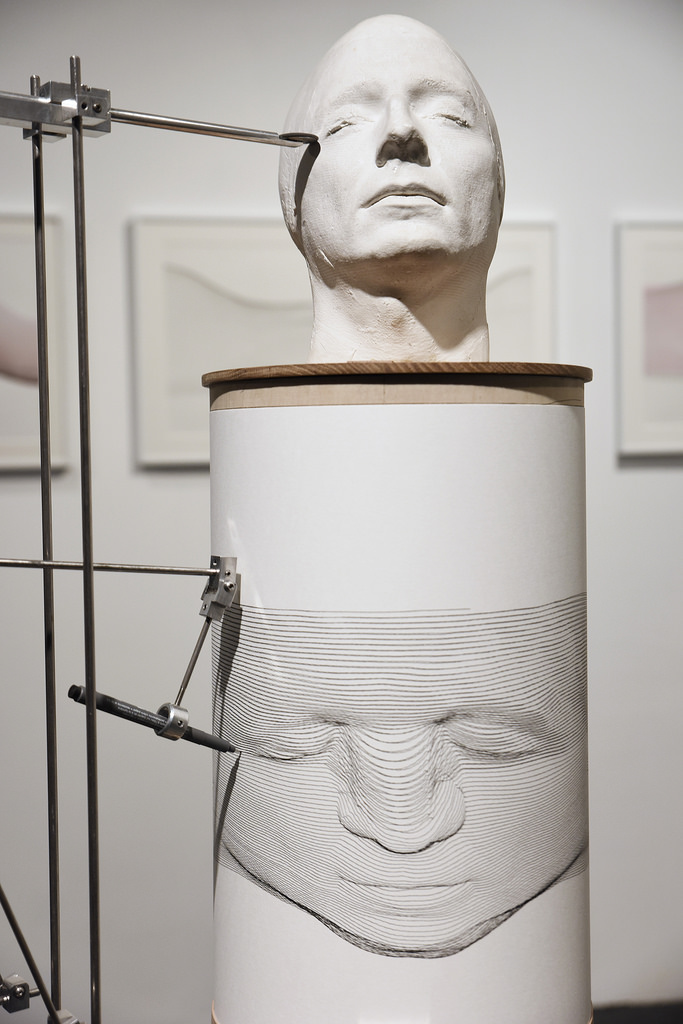
Balint Bolygo, Trace II, 2012. Photo by Luce Moreau for GAMERZ
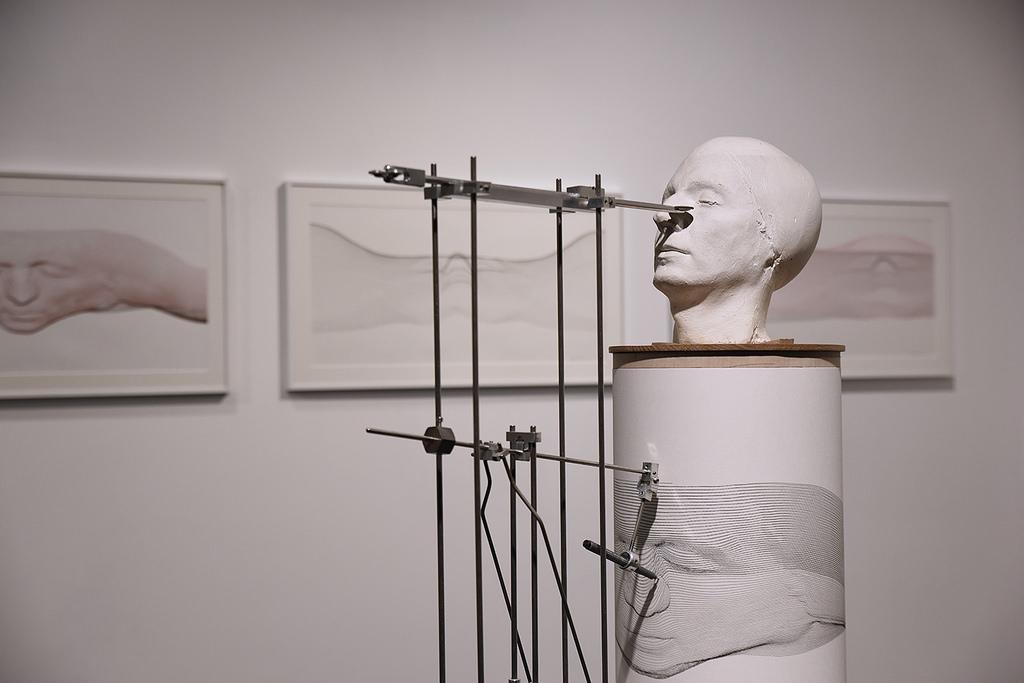
Balint Bolygo, Trace II, 2012. Photo by Luce Moreau for GAMERZ
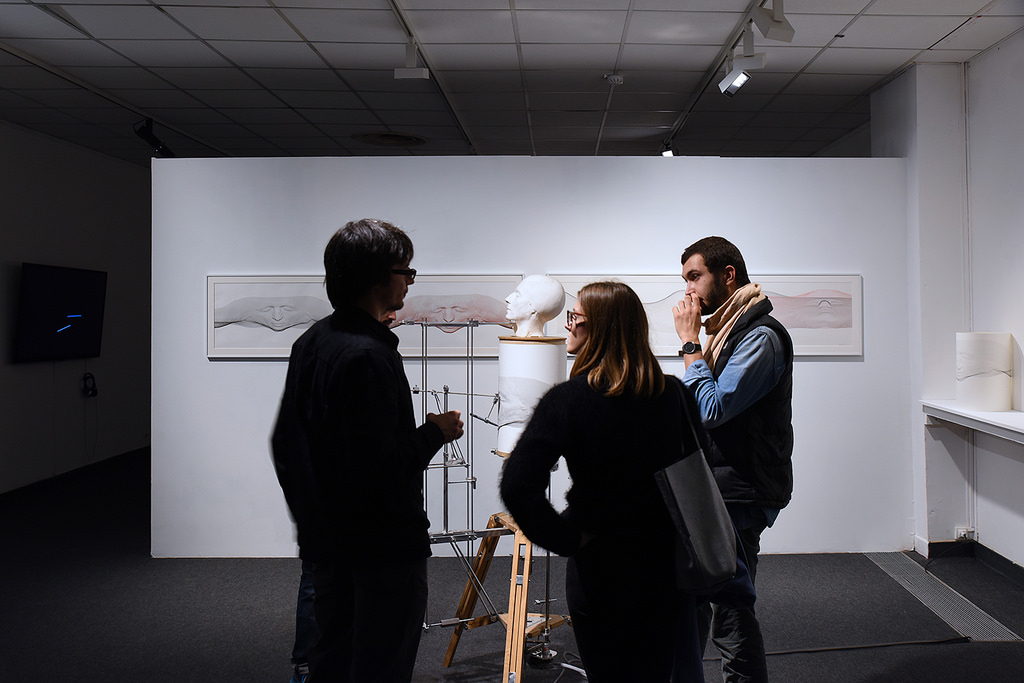
Balint Bolygo, Trace II, 2012. Photo by Luce Moreau for GAMERZ
Balint Bolygo‘s Trace II is a mechanical 3D scanner that slowly draws a 3D mapping of objects placed on it -in this case a cast of the artist’s head- and translates the undulations onto a rotating cylindrical surface. The device functions like a mechanical computer reduced to its bare essentials: the code or program is a 3D plaster object, the mechanical parts are the hardware and the screen takes the form of paper and pen.
Trace II’s topographical mappings evoke images generated by high technologies such as MRI scans, 3D scanning, etc. The difference is that this kinetic sculpture is an open structure where the workings are visible and easy to read, allowing the viewer to reconnect with the process behind the image production. This transparency in the mechanism and process is so unexpected nowadays that it becomes strangely fascinating.
The sculptural device has a darker edge to it. It not only alludes to contemporary high tech but it also recalls pseudoscientific concepts such as phrenology, physiognomy, and craniometry.
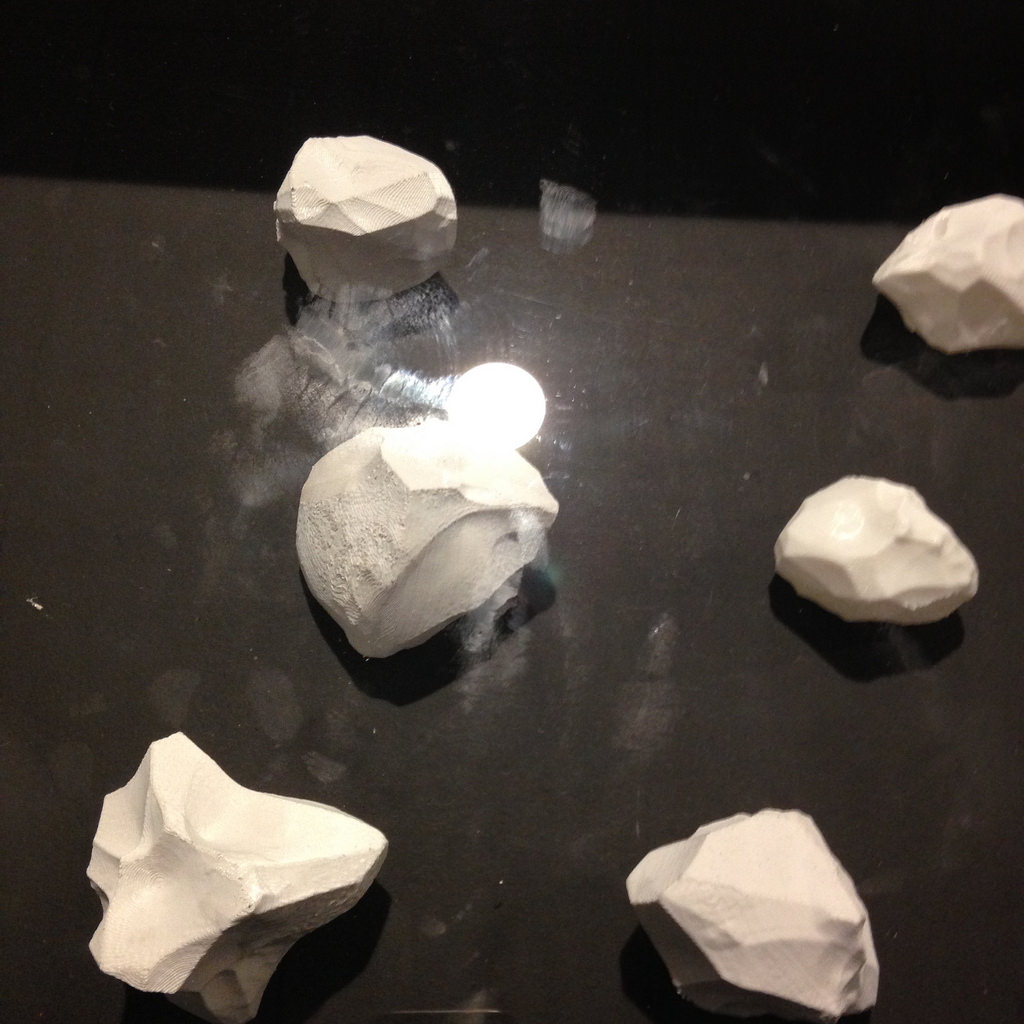
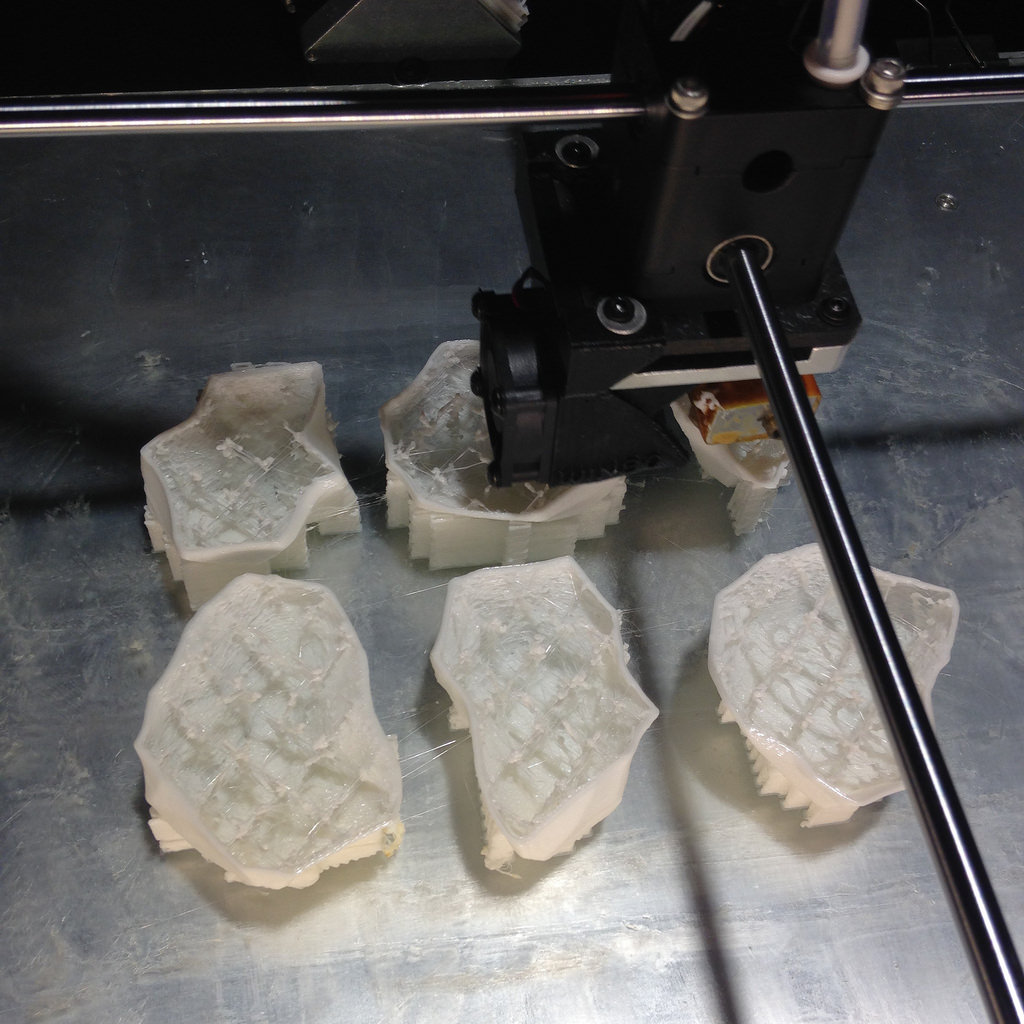
Line Kernel, PerlinRocks, 2015
PerlinRocks is a small factory that manufactures small rocks. The 3D printer slowly and tirelessly prints little rocks in compostable plastic. Each of its creation is slightly different from the other, just like the rocks you find in nature. For some reason, i was incredibly moved by this quiet mass-production of small artificial artefacts that will eventually dissolve into nature itself.
The work uses Perlin Noise, an algorithm that was originally developed for the movie Tron back in 1983 to add video noise to the 3D layers. Now used in creative coding applications and games, the algorithm is often used to recreate natural shapes in 3D.
The artist writes:
The name of the piece could be “this is not a sculpture (but an algorithm)” as a reference that the emphasis of the piece is not about showing the result, because it could take many different form, but the fact that behind any generative work there is an algorithm, and here I took Perlin Noise, one of the most versatile, well known, and most used Algorithm, a algorithm so great that we could from times to times swear that it is actually the algorithm that orchestrate some parts of the nature around us
.
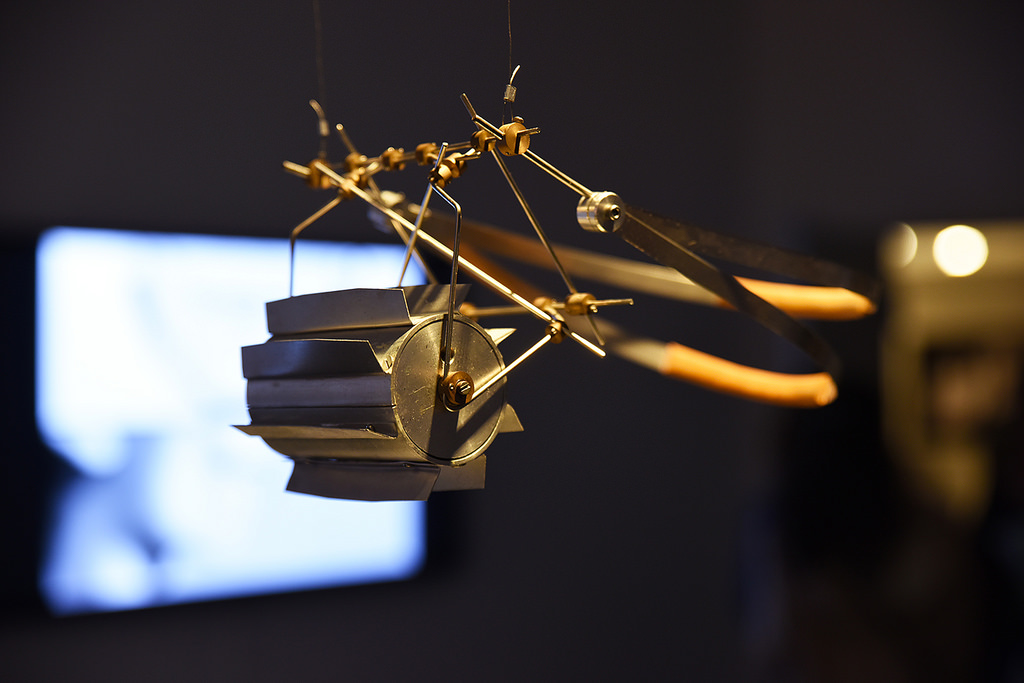
Cheng Guo, Mouth Factory. Photo Luce Moreau for GAMERZ
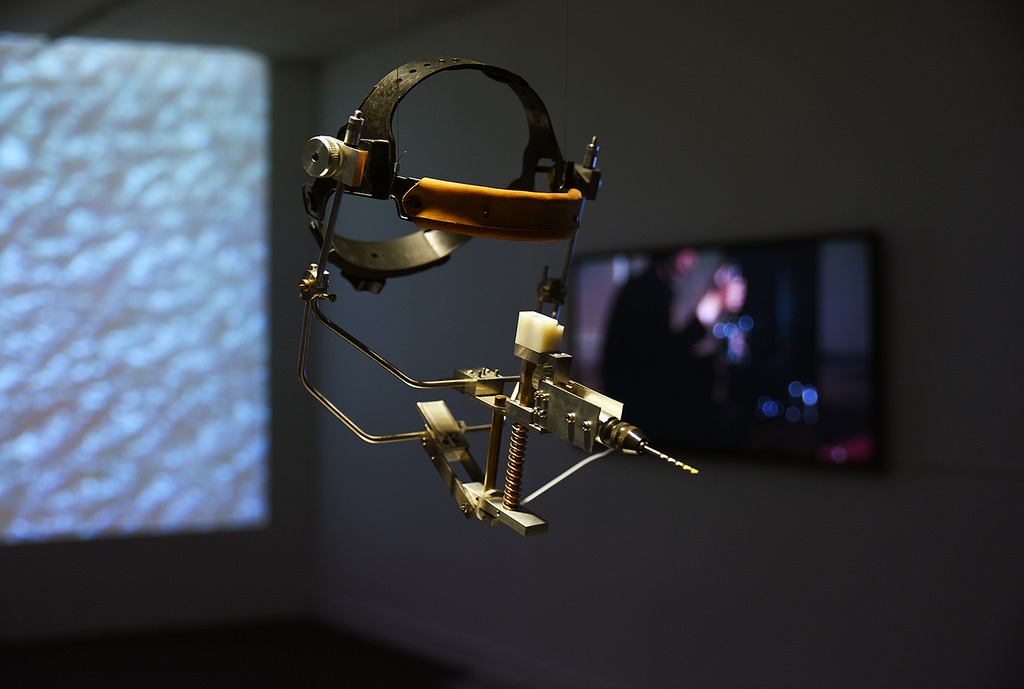
Cheng Guo, Mouth Factory, 2012. Photo Luce Moreau for GAMERZ
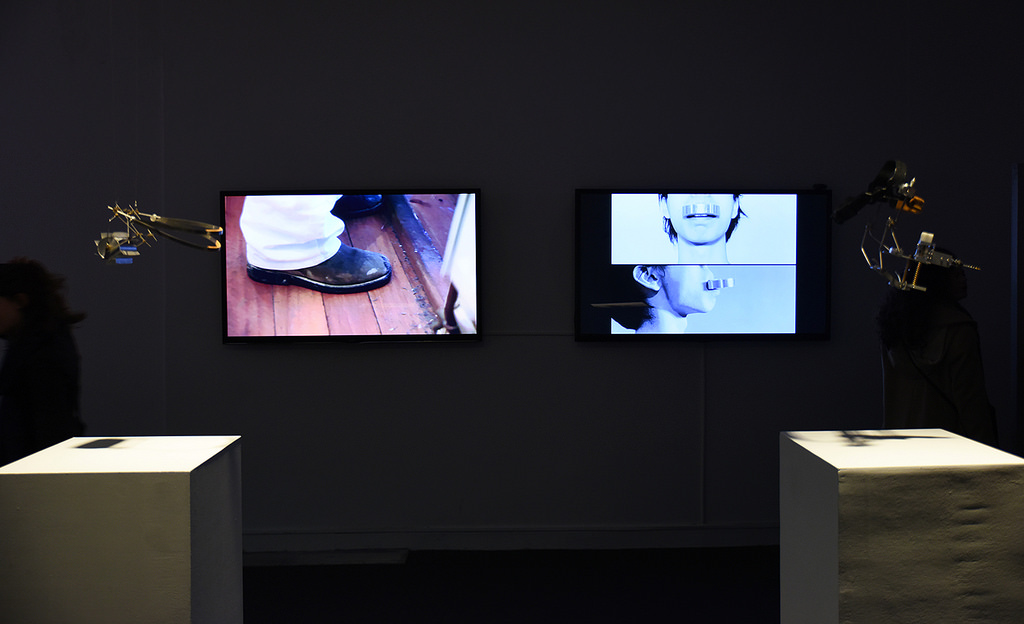
Cheng Guo, Mouth Factory. Photo Luce Moreau for GAMERZ
Cheng Guo, Mouth Factory-5 Sequences that demonstrate a different application of the apparatuses
Mouth Factory is a set of machines designed to be operated by the mouth. By wearing one of the instruments, you become a piece of the instrument yourself. There’s a ‘tongue extruder’ which squeezes out Play-Doh at the push of the tongue, a drill operated by chewing, a vacuum forming tool that allows you to mould objects by inhaling, a lathe to spin and cut a piece of wood, etc.
As a comment on human enhancement, Mouth Factory is investigating news modes of production. The aesthetic of the devices is quite striking. Each of them recalls dental braces, only even more oppressive and distorting for the features. Besides, if used regularly, the instruments will leave their mark by gradually modifying the features of the human face.
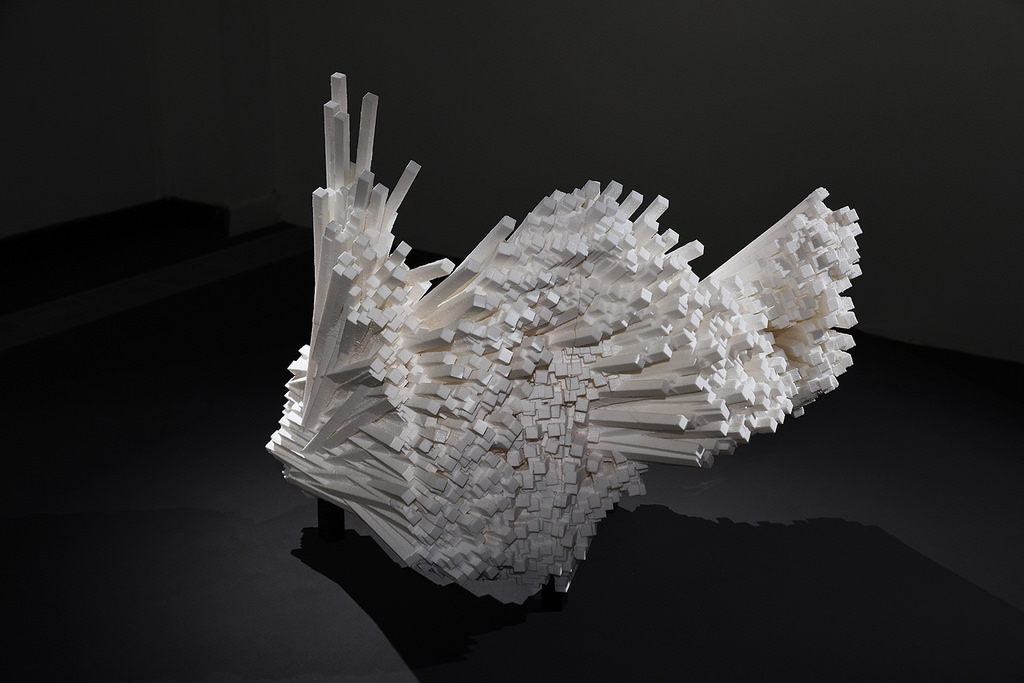
Paul Destieu, Archive d’une frappe. Photo Luce Moreau for GAMERZ
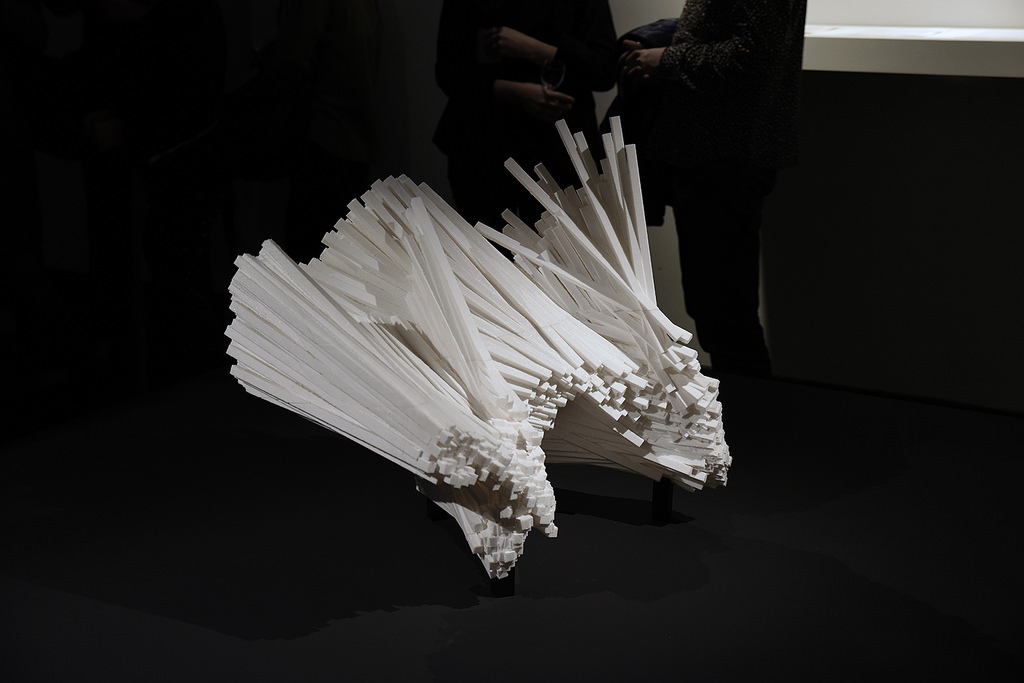
Paul Destieu, Archive d’une frappe. Photo Luce Moreau for GAMERZ
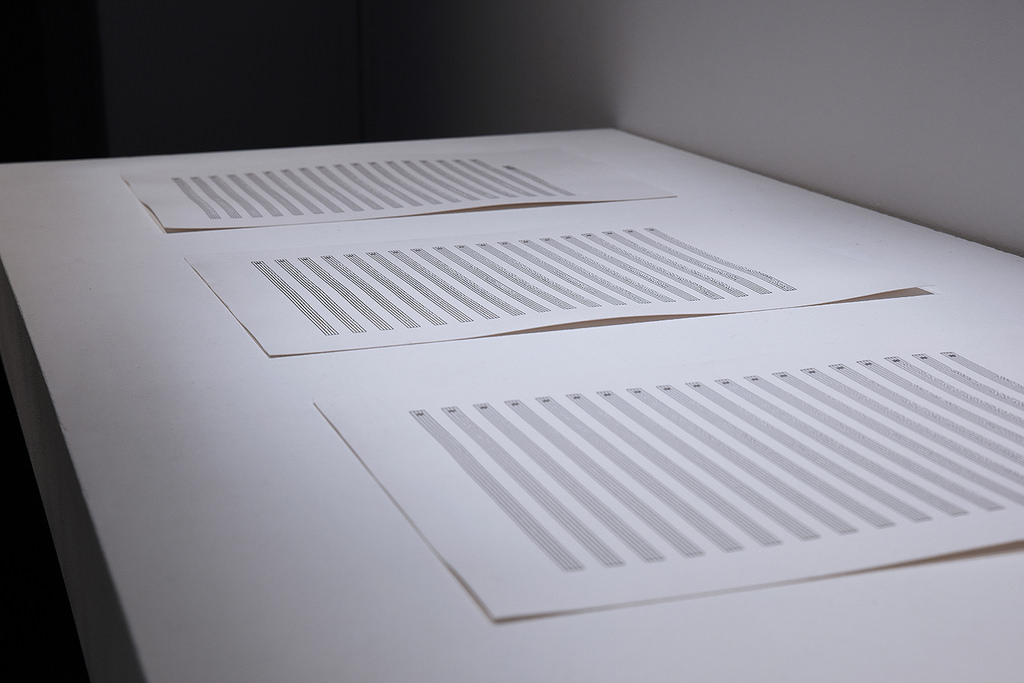
Paul Destieu, Archive d’une frappe. Photo Luce Moreau for GAMERZ
Archive d’une frappe (Archive of a hit) is part of a research exploring the materialization of sound and musical forms.
The work visualizes and make tangible the unfolding of a given gesture performed by a musician playing a drum. Once captured, synthetized and 3D printed, the hit on the musical instrument is extracted as a physical counter-form both from the interpreter and the drumstick.
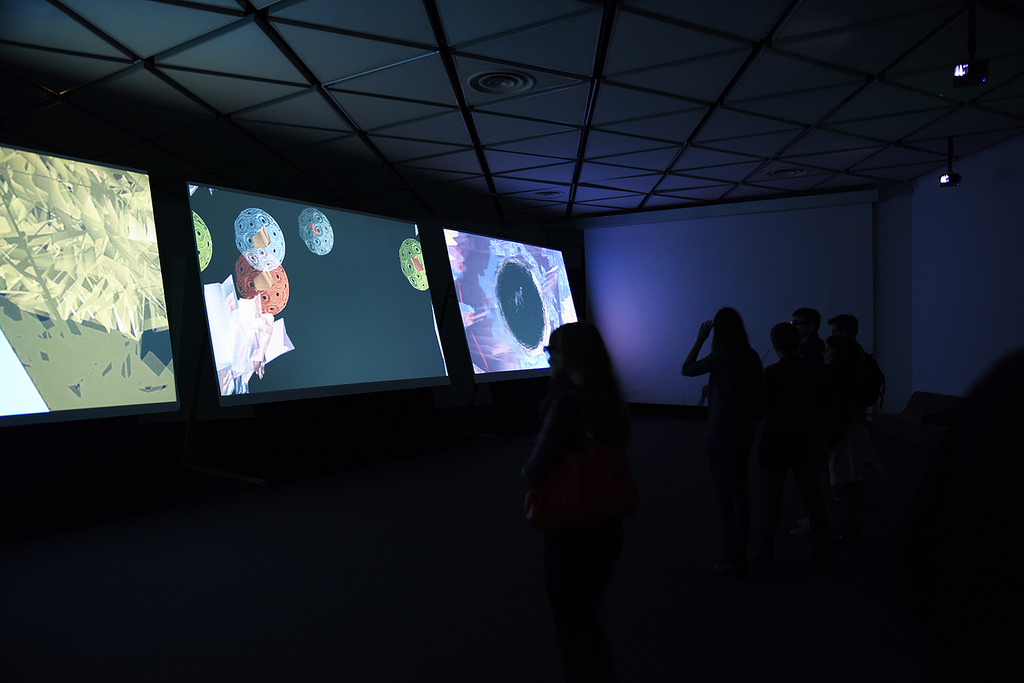
Scott Sinclair and Pierre-Erick Lefebvre, The Superusers, Anaglyph 3D performance, 2015. Photo Luce Moreau for GAMERZ
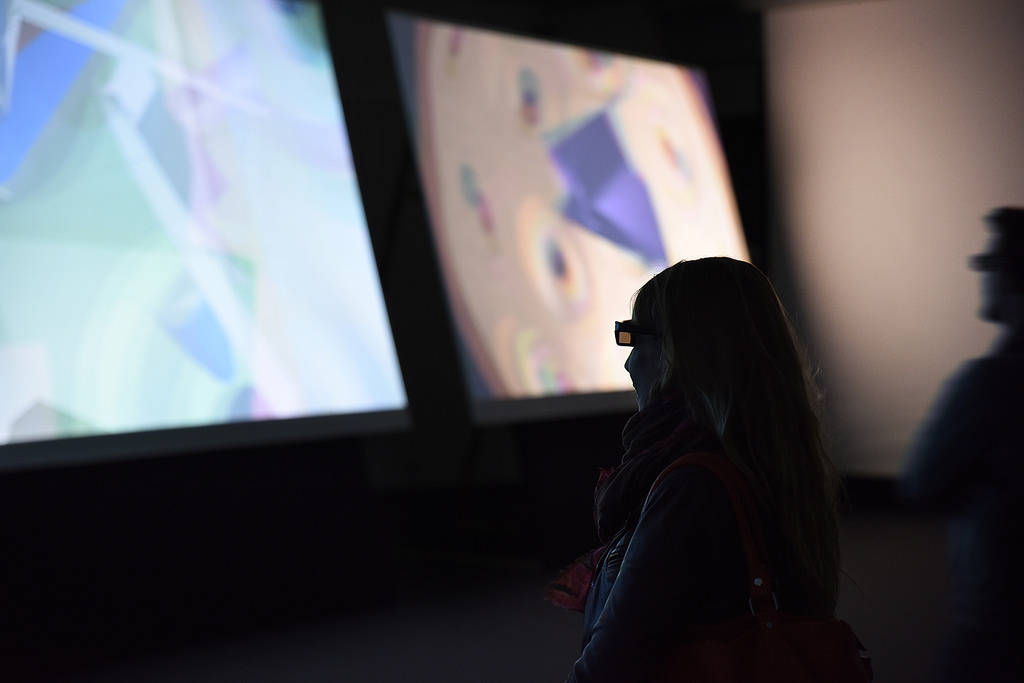
Scott Sinclair and Pierre-Erick Lefebvre / The Superusers, Anaglyph 3D performance, 2015. Photo Luce Moreau for GAMERZ
The Superusers had a spectacularly hypnotizing multi-screen installation to be viewed with 3D glasses. The work attempts to capture the thrill and science-fiction nostalgia of early 3D films whilst also embracing the failures of the technology.
Each screen shows the creation, propagation, and destruction of a separate digital cosmos. Faceless satellites gracefully dance and sing atop an alien landscape in a disturbed sense of synaesthesia. These objects are then pushed through a flowering of ‘trailspace’ where they meet and bind to highly mutated versions of themselves, starting them on a path to overpopulation and Designed-To-Fail ruin. Like a self-sabotaging assembly line, depictions of smooth geometry continually commit suicide in their failed in their efforts to surpass the complexity of natural forms.
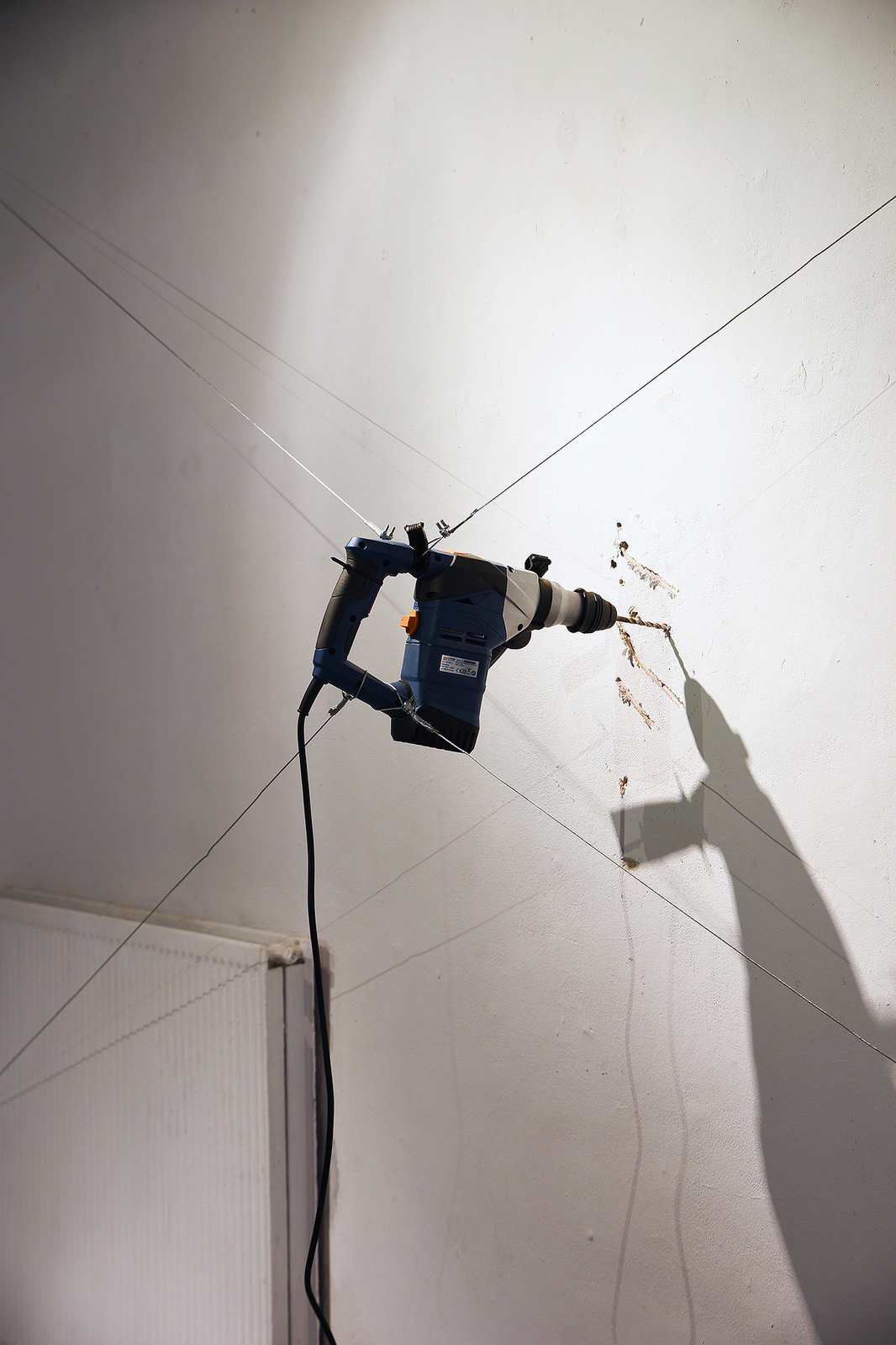
Jonah Brucker-Cohen, Alerting Infrastructure!, 2003. Photo Luce Moreau for GAMERZ
I can’t believe Alerting Infrastructure! is almost 13 years old. The pneumatic jackhammer is hanging by a wall, getting into action and drilling each time someone visits the festival website.
The amount of structural damage to the building directly correlates to the amount of exposure and attention the web site gets, thus exposing the physical structure’s temporal existence……This way visitors to the physical space can get a sense of how many online visitors have come and gone and experience their presence as the walls slowly deteriorate.
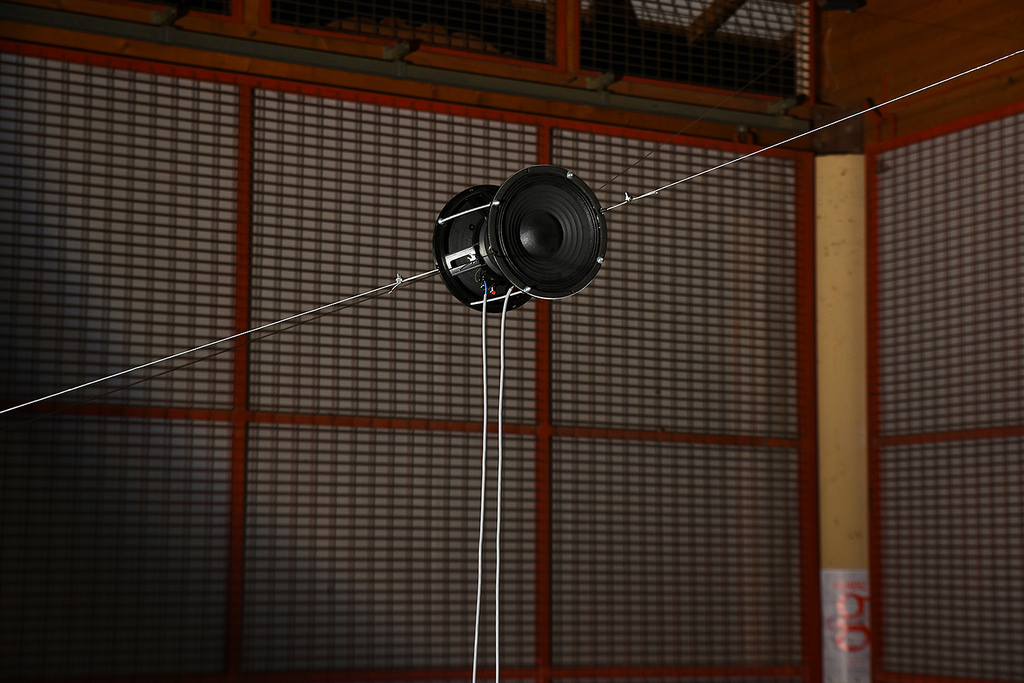
Lucien Gaudion, O, 2015. Photo Luce Moreau for GAMERZ
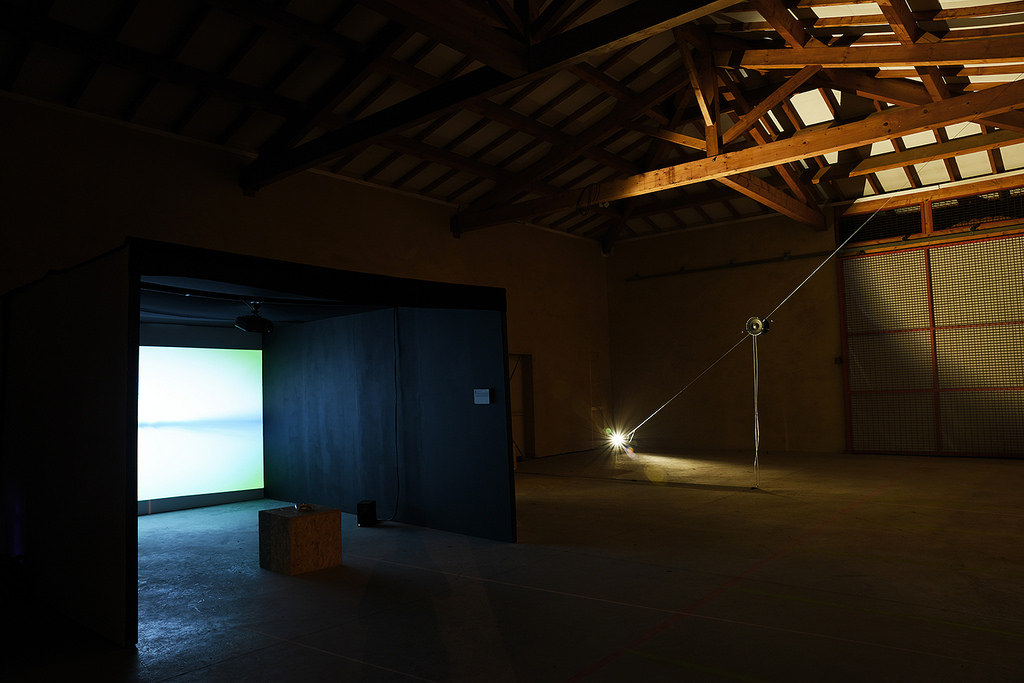
Lucien Gaudion, O, 2015. Photo Luce Moreau for GAMERZ
Point O, a title which refers to the point of origin within a geometrical space, aims to reveal the architectural tension of the space. Two loudspeakers are suspended by metal cables at the centre of a room which constitutes the Point O. Micro piezoelectric materials capture the vibrations of the loudspeakers into the taut cables and turn them into audio signals within the loudspeakers, generating audio feedbacks.
More photos from the festival:
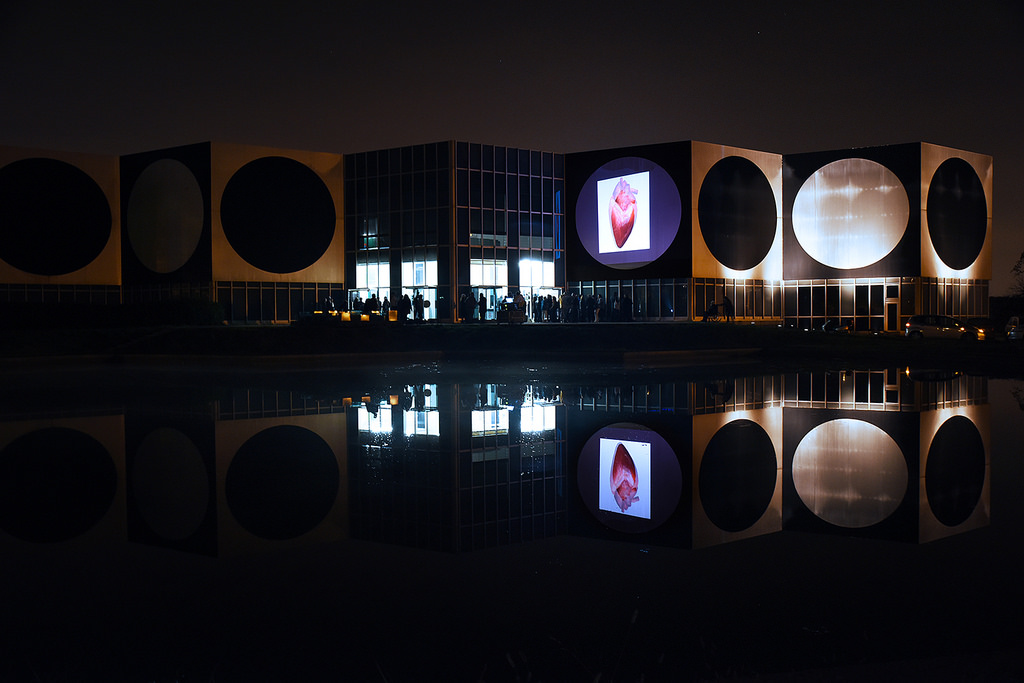
The Vasarely Foundation, one of the main exhibition space of the festival. Photo Luce Moreau for GAMERZ
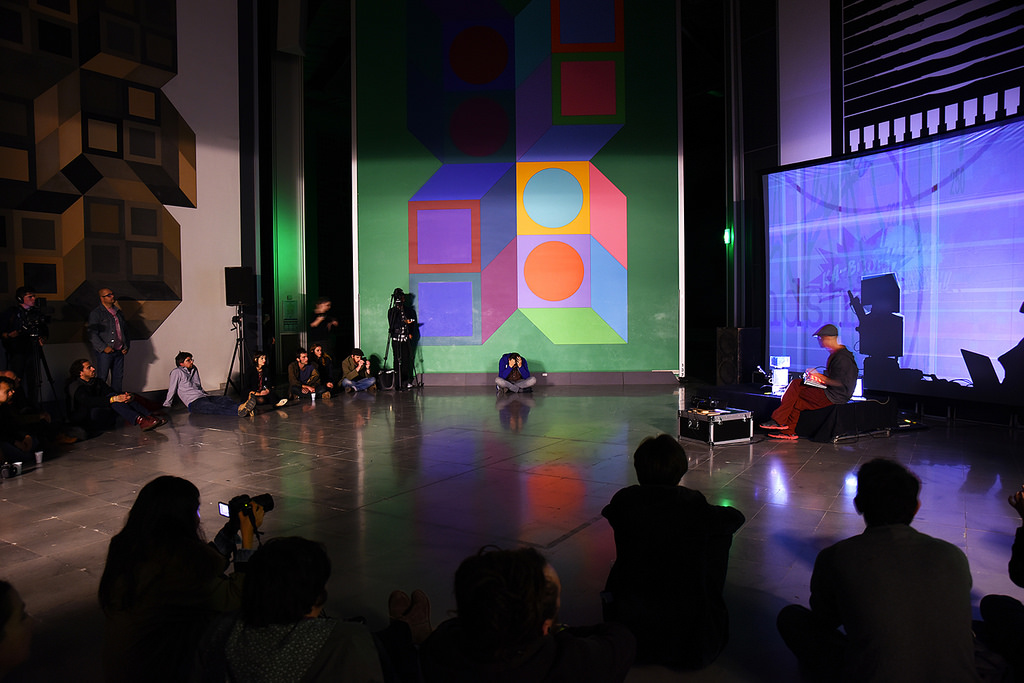
Inside the Vasarely Foundation, one of the main exhibition space of the festival. Photo Luce Moreau for GAMERZ
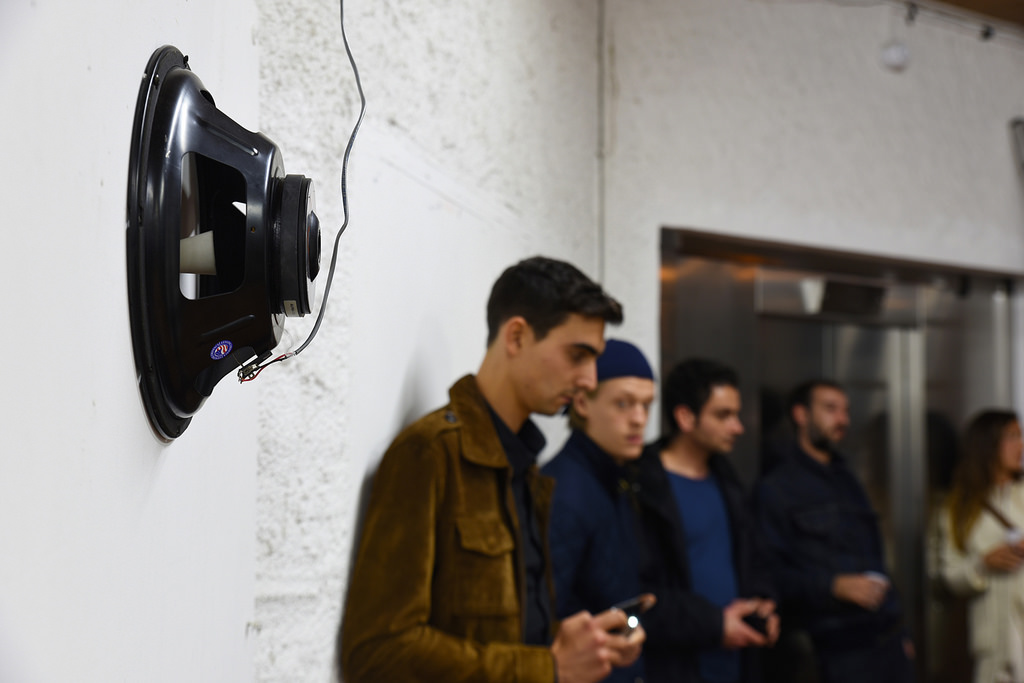
Gamerz festival. Photo Luce Moreau for GAMERZ
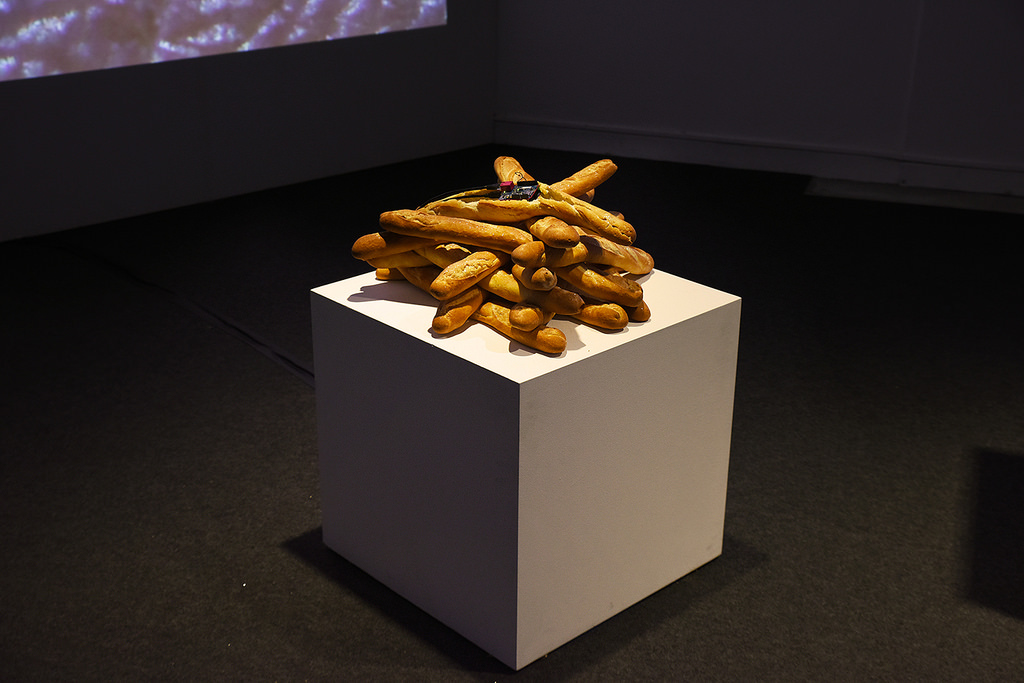
Emilie Gervais, *So Happy I Could Die (Lady Gaga cover)*, site web interactif, XIV. Photo Luce Moreau for GAMERZ

Emilie Gervais, *So Happy I Could Die (Lady Gaga cover)*, site web interactif, XIV. Photo Luce Moreau for GAMERZ
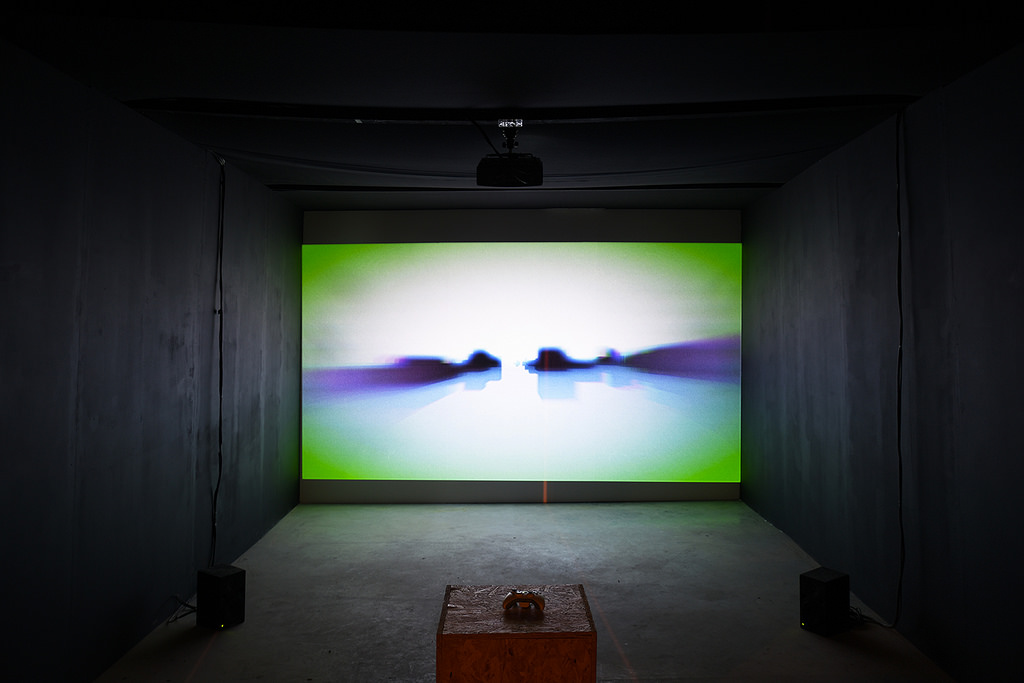
Gamerz festival 2015. Photo Luce Moreau for GAMERZ
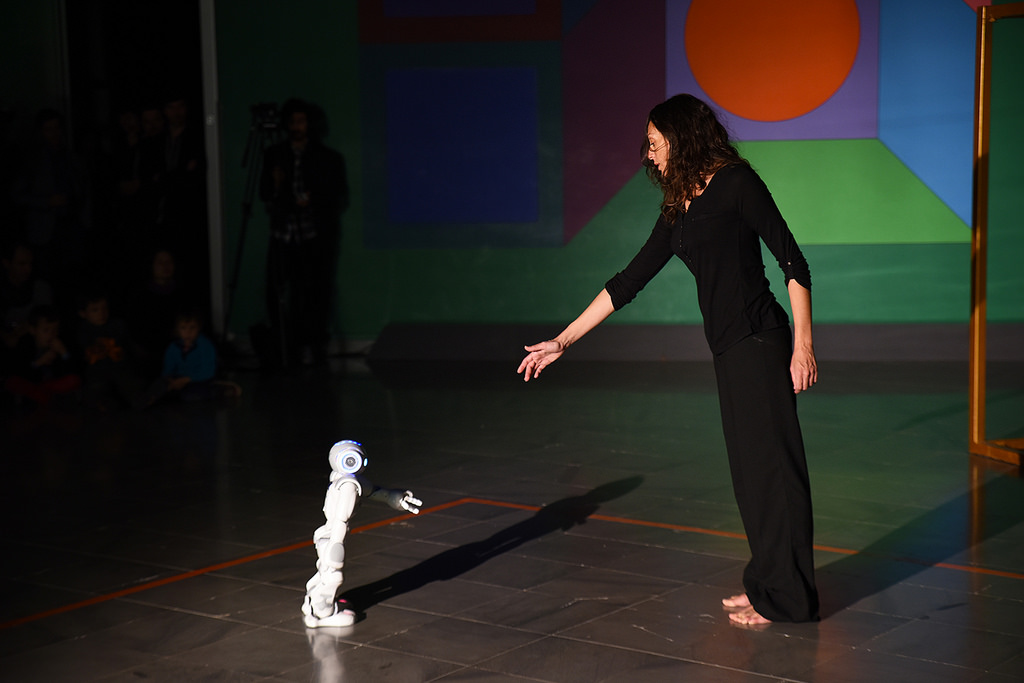
Emmanuelle Grangier, Link Human / Robot, performance, vernissage du Festival GAMERZ 11, 6 novembre 2015. Photo Luce Moreau for GAMERZ
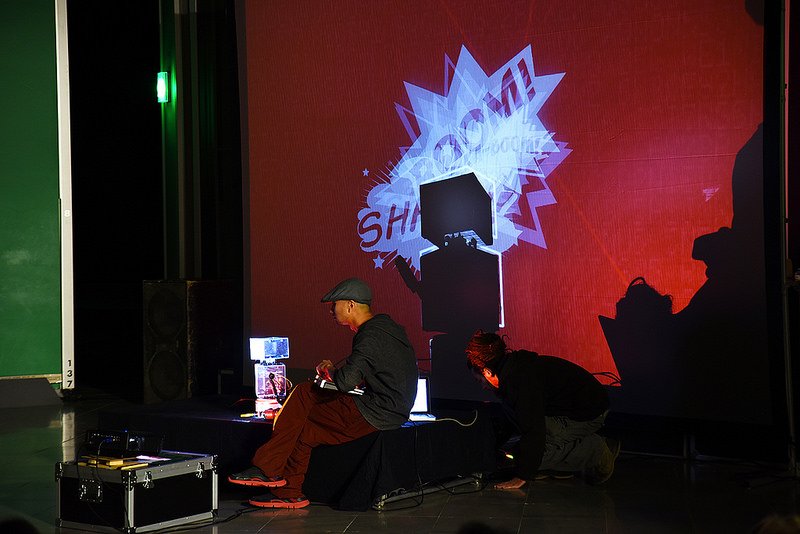
Nao, Monkey TURN, performance, GAMERZ 11 opening, 6 novembre 2015. Photo Luce Moreau for GAMERZ

Nao, Monkey TURN, performance, GAMERZ 11 opening, 6 novembre 2015. Photo Luce Moreau for GAMERZ
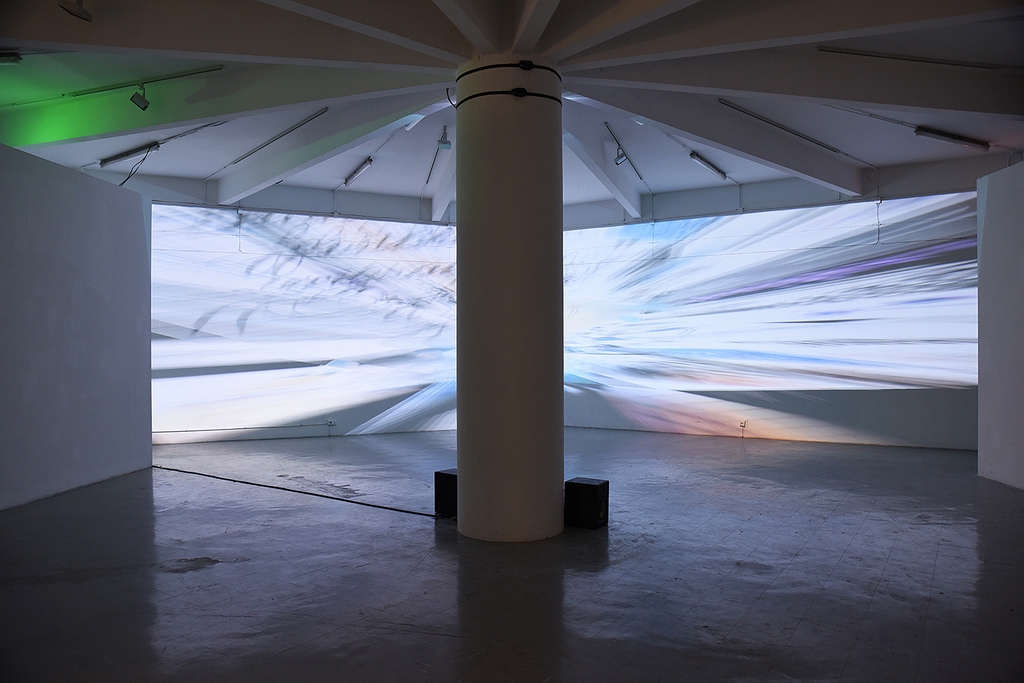
Philippe Boisnard and Arnaud Courcelle, Shape_of_Memory, 2015. Photo Luce Moreau for GAMERZ
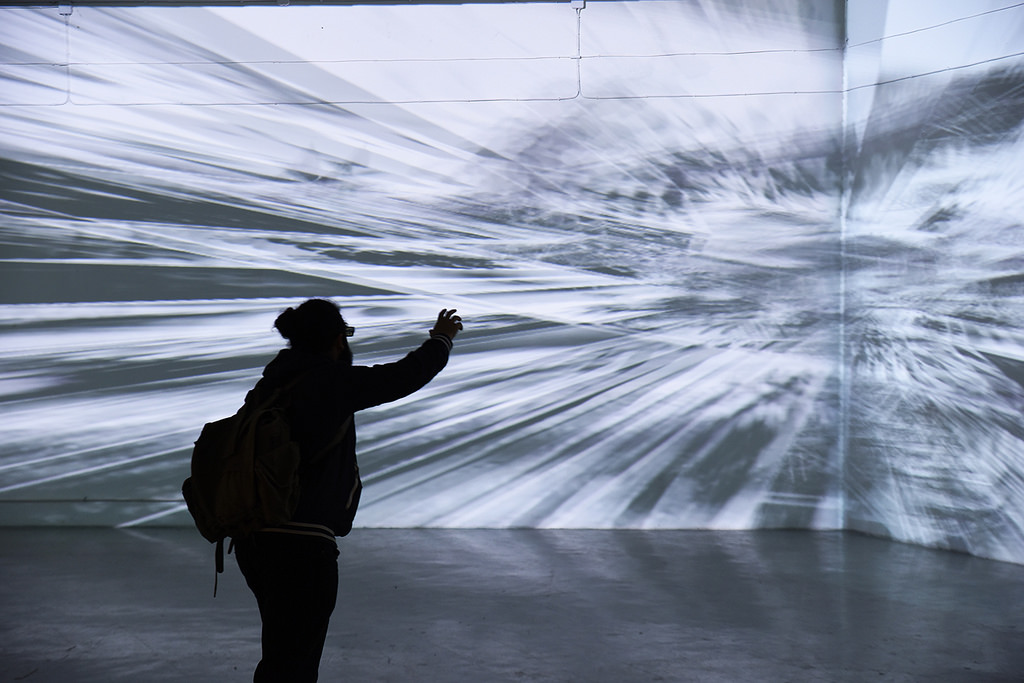
Philippe Boisnard and Arnaud Courcelle, Shape_of_Memory, 2015. Photo Luce Moreau for GAMERZ
My photos are here. And these are the ones made by the festival photographer.
Previously: GAMERZ Part 1. Playing is a serious business.
